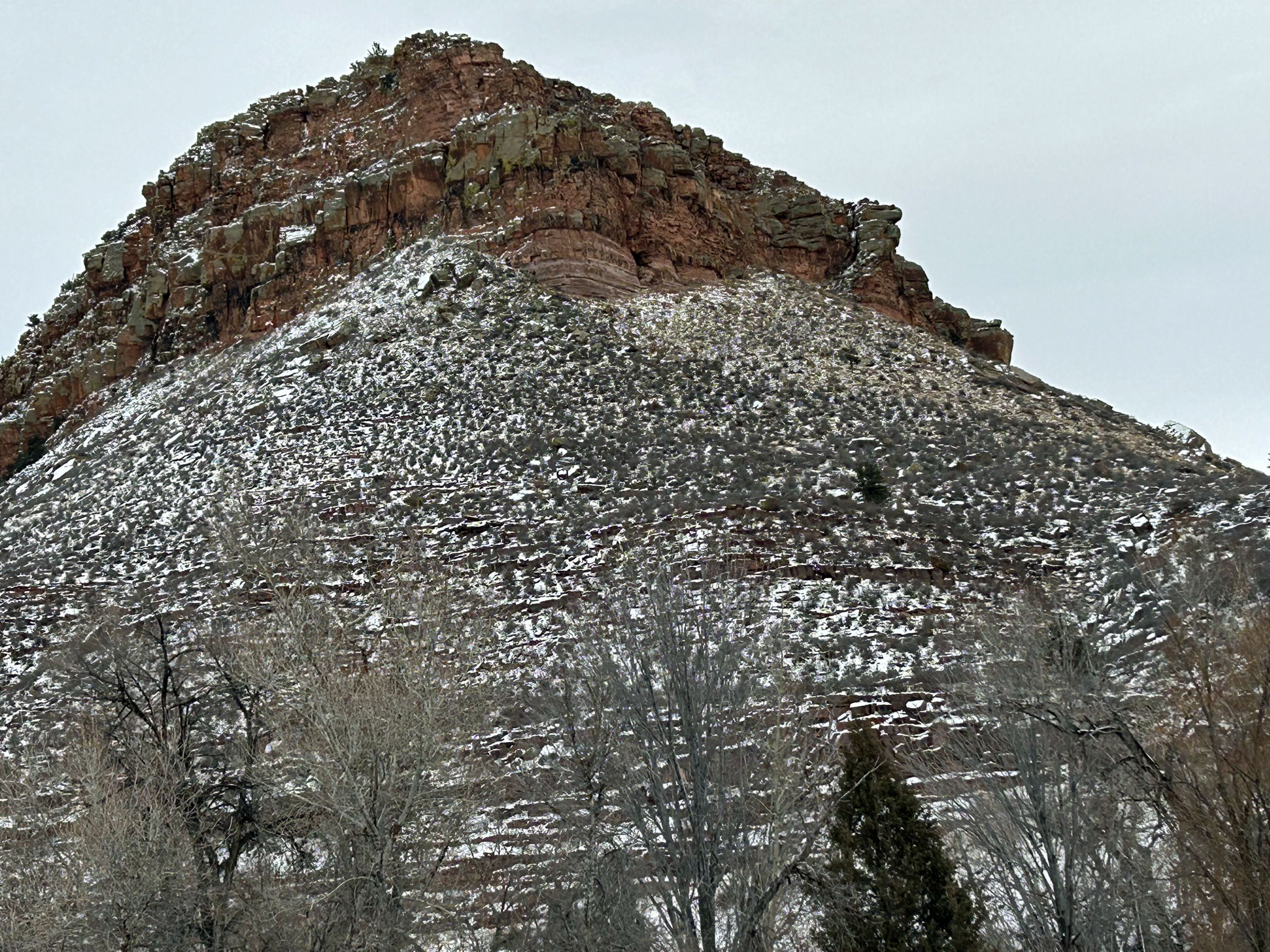
This will be a bit of a stretch, a hill, a ridge too far for some of my pipe-smoking friends. Let’s just say the Pundit continues to suffer from being a mile too high.
On a recent trip to Colorado, I traveled up and across Berthoud Pass, a mere 11,106 feet skyward, and later returned over the Continental Divide. Up and down, over, and beyond!
Berthoud Pass is 1.4 billion years old, give or take a million. And the Continental Divide is a mere 70 million years old.
Please, no jokes about Pundit’s age. It’s not in the millions. Just sayin’.
Cutting across the Great Divide in Colorado—which slices through some 21 counties in the Centennial State since it earned statehood in 1876, 100 years after the signing of the Declaration of Independence—Pundit was stunned by massive, and ever-hovering rock structures.
And whether or not you are into geology and rocks, you might like to know that a couple of famous geologists (and presumably rockhounds) from way back were pipe smokers.
There was John Muir, naturalist, botanist, writer, and author, who traipsed across the nation on foot! Make that a 1,000-mile trip afoot!
You might recall that after viewing the phenomenal natural beauty stretched out before him in Yosemite, he convinced ol’ Rough Rider U.S. President Teddy Roosevelt to join him on a camping trip to see the land in all its geological beauty.
Muir’s influence was instrumental in getting the land preserved. A natural loveliness we enjoy today, just as it was in Muir’s and Teddy’s time.
And Muir had this to say of his early stint in the Sierra Nevada Mountains in the heart of what is now Yosemite National Park: When we try to pick out anything by itself, we find it hitched to everything else in the Universe—from his book, “My First Summer in the Sierra,” 1911, page 110.
John Muir was a pipe smoker.
Then there is John Wesley Powell, a naturalist-geologist, like Muir. He was one of the first to float the upper Colorado River and to give the Grand Canyon its name.
And from one of his observations of the canyon and its marvels: The wonders of the Grand Canyon cannot be adequately represented in symbols of speech, nor by speech itself. The resources of the graphic art are taxed beyond their powers in attempting to portray its features. Language and illustration combined must fail.
John Wesley Powell too was a pipe smoker.
He even swapped pipes with some of the Native Americans he encountered in the great canyonlands and elsewhere as he explored ranges and valleys.
Now just hold on a bit more. I hear the boobirds in the audience trying to drown out the vistas. I see all the eye rolls.
Those craggy Colorado mountains, the famous Rocky Mountains just right there nestled up to roads cut through immense solid rock structures, reminded Pundit of the beautiful sandblasts some of his pipes show off.
I know, a stretch. But what is life without imagination and art?
Imagine rock arrangements wrinkled in layers and stacks, lines etched into massive configurations that once reposed on the bottom of seas that once existed and have since disappeared. Returned and faded into geologic history once again.

(Photo: Fred Brown)
That’s right. Crags and even the look of plateau briars (that knobby rough rim of the bowl). For a better understanding of plateau shapes just head over to SmokingPipes.com.
I can even hear now the loud chorus for someone to get out the stage hook on that one.
But if you have ever had the opportunity to scrutinize those magnificent monoliths, you might arrive at a better understanding of the “craggy” aspect of a pipe’s outer sandblasted skin. Not to mention the pure natural beauty of our pipes and the artisan’s imagination.
One of Pundit’s favorite pipe writers, Chuck Stanion at SmokingPipes.com has some wonderful stories on sandblasting.
But those gigantic rocks of the ages have more lessons. They just didn’t appear in Colorado. They went through billions of years of emerging and disappearing. Oceans came, went, and returned.
Some of the table mountains reminded me of a few of my Sherlock Holmes Petersons, especially the Holmes original with its calabash design. Up, flat, curved.
Mark Irwin, another of the pipe world’s finest authors, has a delightful piece in his Peterson Pipe Notes about the Holmes and the history of the Peterson calabash.
Which brings us to a final thought. Our pipes are born in nature as are we. We are all “hitched” together to everything else in the universe, as John Muir said.
And master pipe artists provide us with a view of the past and present in their marvelous constructions. Layered, craggy, smooth, stained as is the earth in all of its past iterations.
We enjoy such rich pleasure smoking these pieces of history with that fragrant leaf, tobacco in its many forms.
Connected.
Sometimes traveling a mile high into the great Rocky Mountains not only takes your breath away but gives us insight into other parts of our lives.

















